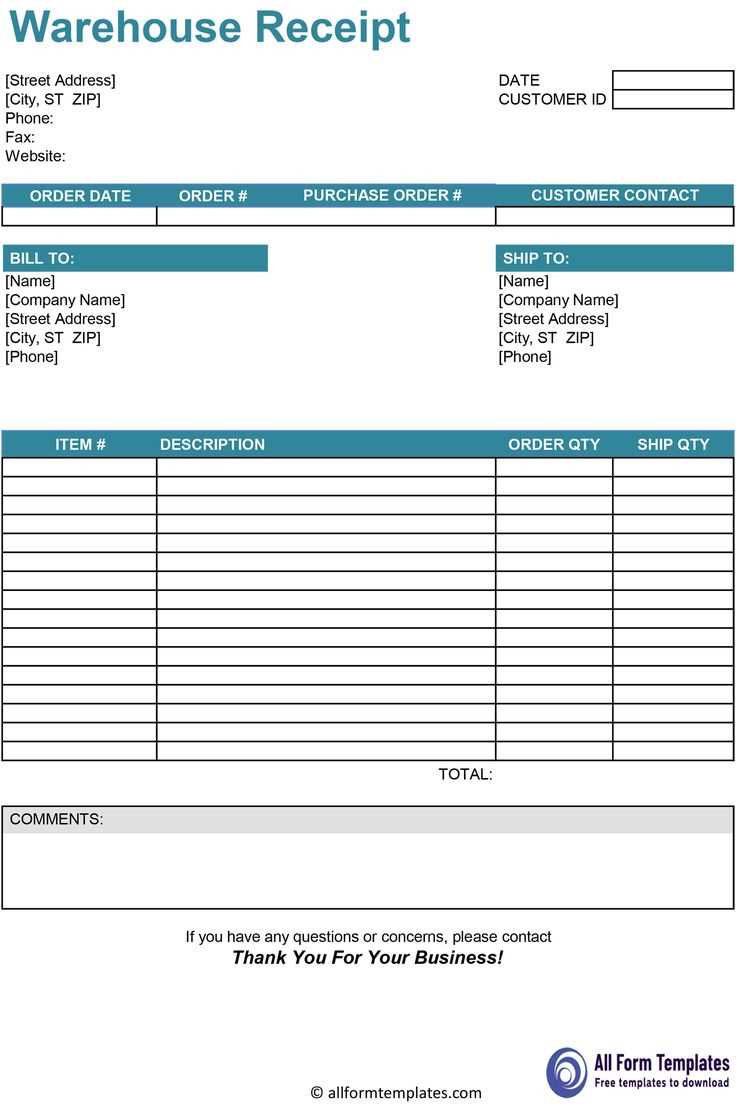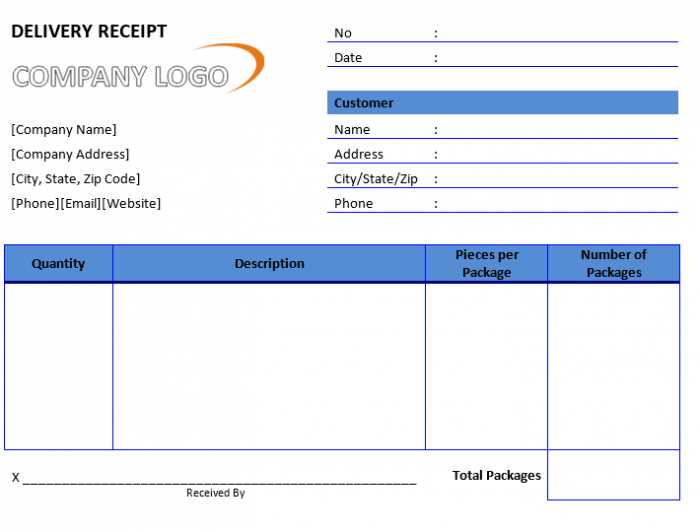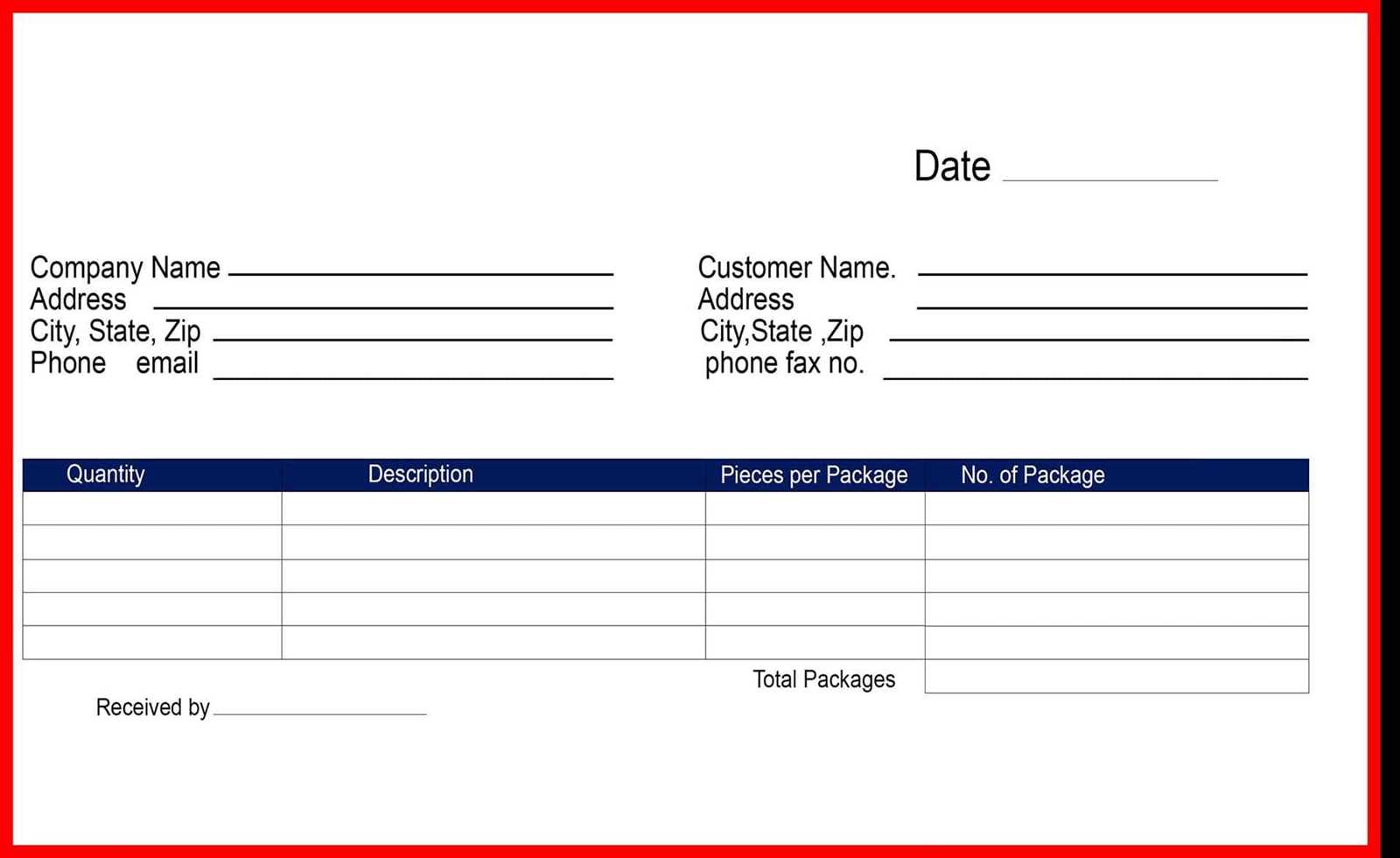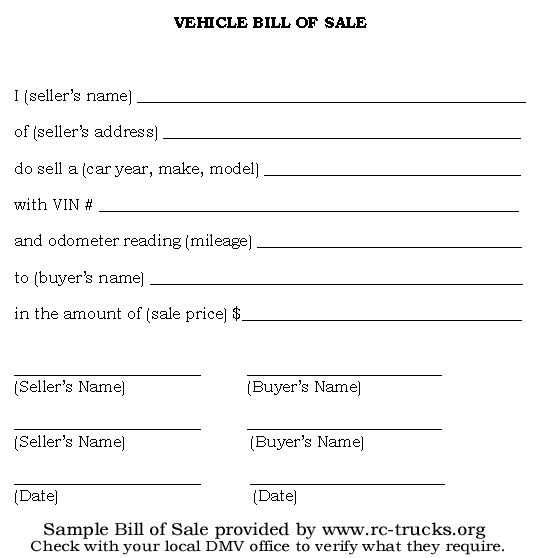
Always document the sale with a receipt to avoid disputes and ensure clarity for both buyer and seller. Even an informal agreement should include key details to confirm the transaction.
Include essential details: names of both parties, date of sale, vehicle description, agreed price, and payment method. A handwritten or typed document is acceptable as long as both sign it.
For added security, mention whether the vehicle is sold “as-is” or if any guarantees apply. If the sale is for cash, state the amount received in both numerals and words to prevent misunderstandings.
Once signed, each party should keep a copy. This simple step can prevent future legal or financial complications.
Informal Receipt Template of Buying a Car
When purchasing a car privately, having a clear, informal receipt is important for both parties. The receipt should include key details of the transaction to avoid misunderstandings. Here’s a simple template you can follow:
Basic Information
The receipt must include the buyer’s and seller’s names and contact details, the date of the transaction, and the car’s make, model, and year. Ensure that the vehicle identification number (VIN) is clearly listed for identification purposes. The sale price and any agreed-upon payment method should also be stated.
Transaction Details
Indicate whether the car is sold “as-is” or with any warranties. If there are any outstanding issues, these should be noted. It’s also a good practice to add a statement confirming that the seller has full ownership of the vehicle and the right to sell it.
Here’s a simple layout for your receipt:
- Seller’s Name: John Doe
- Buyer’s Name: Jane Smith
- Car Details: 2010 Toyota Corolla, VIN: 1234567890ABC
- Sale Price: $7,500
- Payment Method: Cash/Bank Transfer
- Transaction Date: February 10, 2025
- Condition: Sold as-is
Both parties should sign and date the receipt to finalize the transaction. This document serves as proof of sale and protects both the buyer and the seller in case any disputes arise later.
Key Details to Include in the Receipt
Transaction Date: Always include the exact date the purchase took place. This ensures a clear timeline for both parties.
Buyer and Seller Information: Clearly list the full name, address, and contact details of both the buyer and seller. This helps identify the parties involved in case of future inquiries.
Vehicle Details: Include the make, model, year, Vehicle Identification Number (VIN), and mileage of the car. These details are crucial for identifying the vehicle and preventing any confusion later on.
Purchase Price: Clearly state the agreed-upon price for the car. This includes the total amount paid and should account for any deposits or partial payments made prior to the final transaction.
Payment Method: Specify how the payment was made (e.g., cash, bank transfer, check). This provides clarity on the financial aspect of the transaction.
Condition of the Vehicle: Note the condition of the car at the time of sale, including any disclaimers about defects or damages, if applicable. This protects both parties from potential disputes regarding the car’s state.
Signatures: Both the buyer and seller should sign the receipt to confirm that they agree with all the details outlined in the document. This makes the transaction legally binding.
Legal Considerations for a Private Sale
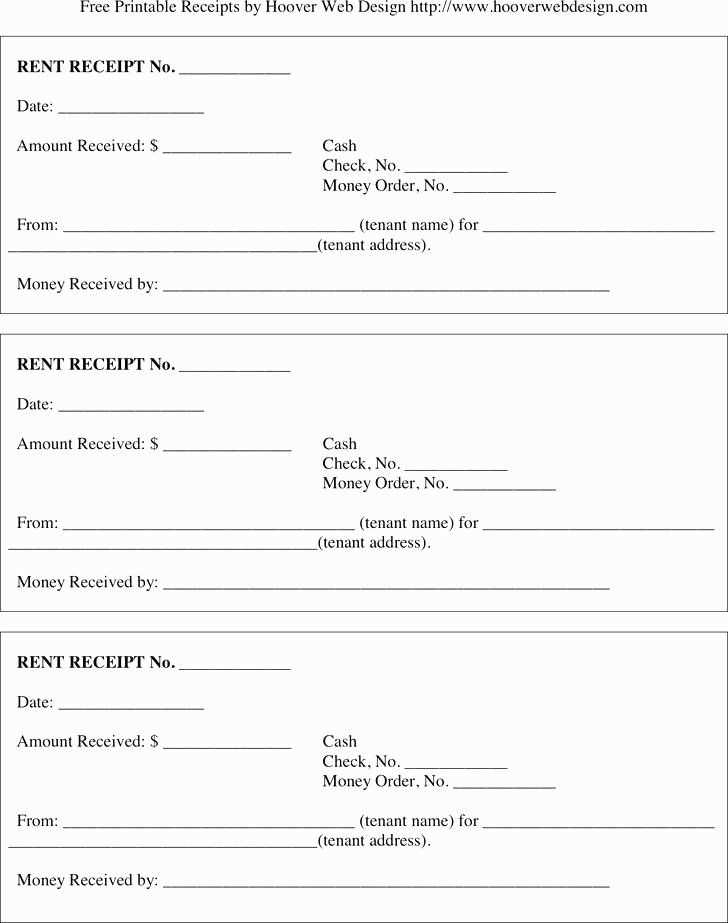
Before proceeding with a private car sale, make sure to have a written agreement in place. This should clearly state the terms of the sale, such as the vehicle’s make, model, year, condition, and the agreed price. Both parties must sign the agreement, acknowledging that they have understood and accepted the terms.
Transfer of Ownership
Ensure that the vehicle’s title is transferred to the buyer’s name. This process may vary by location, so check with local authorities for the required steps. The seller should also remove their license plates before handing over the car to avoid any future liability.
Warranties and Liability
Specify whether the car is being sold “as is,” which means the buyer assumes full responsibility for any issues after the sale. If the car is sold with a warranty, the terms should be clearly outlined. Be honest about the condition of the car to avoid any legal disputes later.
Note: Some regions may require the seller to provide a bill of sale or other documentation proving the transaction. Always consult with local regulations to ensure compliance with all legal requirements.
How to Describe the Vehicle Accurately
Be clear and precise when detailing the vehicle’s specifications. Focus on key aspects such as make, model, year, mileage, and condition. For instance, instead of just stating “good condition,” mention specific details like “exterior free from dents, with minor wear on the tires.” Use exact terms for the car’s features, such as “leather interior,” “sunroof,” or “Bluetooth connectivity,” avoiding vague descriptions.
Include the Vehicle Identification Number (VIN)
Always include the VIN in your description. This unique identifier allows for verification of the car’s history, including past ownership, accident reports, and whether the car has been marked as stolen. The VIN provides crucial accuracy in confirming the vehicle’s details.
Highlight Maintenance History
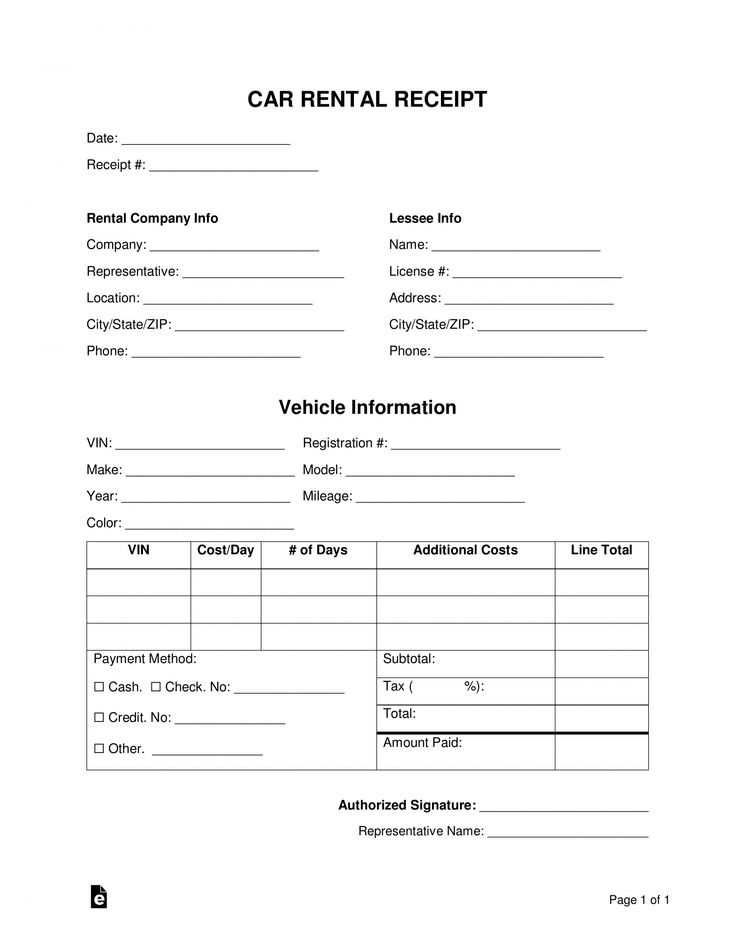
Mention the car’s service records. If available, specify any recent repairs or replacements, such as “replaced timing belt at 60,000 miles” or “new brake pads installed.” This builds confidence for the buyer, showing that the vehicle has been well cared for.
Payment Confirmation and Terms
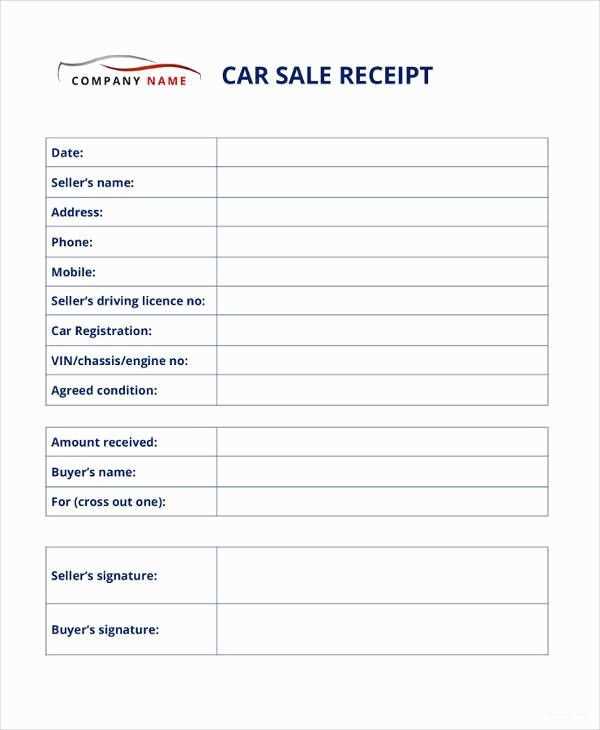
Ensure both parties sign the payment agreement before transferring any funds. Specify the exact payment method, whether it’s cash, bank transfer, or another option. Include the agreed amount and confirm that it is the full and final payment for the vehicle. Clearly state the payment due date and any deadlines for installments, if applicable.
It’s advisable to include a clause that the vehicle is sold as-is, with no warranty or guarantees, unless otherwise agreed. Mention any conditions for payment adjustments, such as taxes or additional fees. For installment payments, clarify the schedule, interest rates, and consequences of late payments.
Upon receiving the payment, both parties should sign and date the receipt, confirming the transaction. Keep a copy for future reference in case of disputes or for documentation purposes. Both parties should agree to the terms outlined in the receipt to avoid misunderstandings later.
Buyer and Seller Signatures
Both the buyer and the seller must sign the receipt to confirm the transaction. This step legally acknowledges the transfer of ownership and ensures both parties’ agreement on the terms outlined in the document.
Buyer’s Signature
The buyer should sign in the designated space, verifying the agreement and confirming receipt of the vehicle. Make sure the signature is clear and matches the buyer’s identification. In case of any discrepancies, this can serve as a reference point for future clarification.
Seller’s Signature
The seller’s signature confirms that the car has been sold and transferred to the buyer. It indicates the seller’s agreement to the terms of the sale and certifies that they have received the payment. This signature should be placed in the designated spot, ensuring the seller’s details are accurate.
- Both signatures should be completed at the same time to avoid any confusion.
- It is advisable to have a witness present to further validate the agreement, although it is not mandatory.
- If possible, both parties should keep a copy of the signed receipt for future reference.
Storing and Using the Receipt for Future Reference
Keep the receipt in a safe location where you can easily access it later. A physical copy should be stored in a filing cabinet or a specific folder designated for important documents. For digital copies, scan or take a photo of the receipt and save it in a well-organized folder on your computer or cloud storage. Ensure that the file is named clearly, including the date of purchase and the car’s model, to simplify retrieval.
When you need to use the receipt for reference, whether for warranty claims or selling the car, check the file or folder you’ve organized. It’s also helpful to keep a record of any related documents, like service reports or repair receipts, in the same place. This will make it easier to track your car’s maintenance history and support any claims or transactions that might arise later.
| Storage Method | Benefits |
|---|---|
| Physical Copy | Can be easily reviewed at any time without technology. Ideal for long-term storage. |
| Digital Copy | Accessible from any device, can be quickly shared with others when needed. Reduces risk of physical damage. |
By keeping both physical and digital copies organized and easy to access, you ensure that the receipt is ready whenever you need it for future reference, whether for repairs, resale, or warranty purposes.
